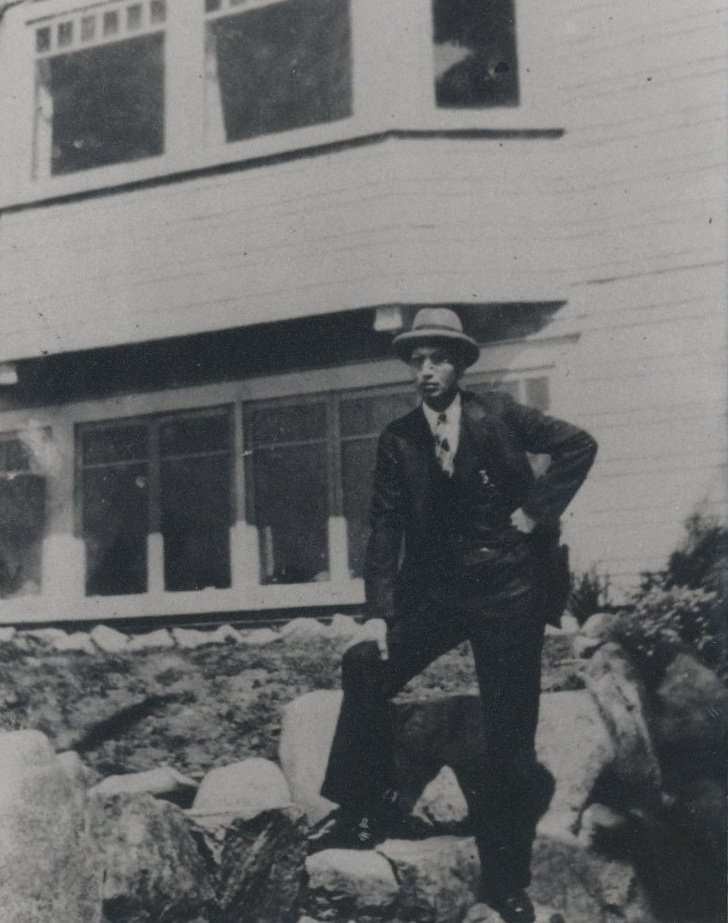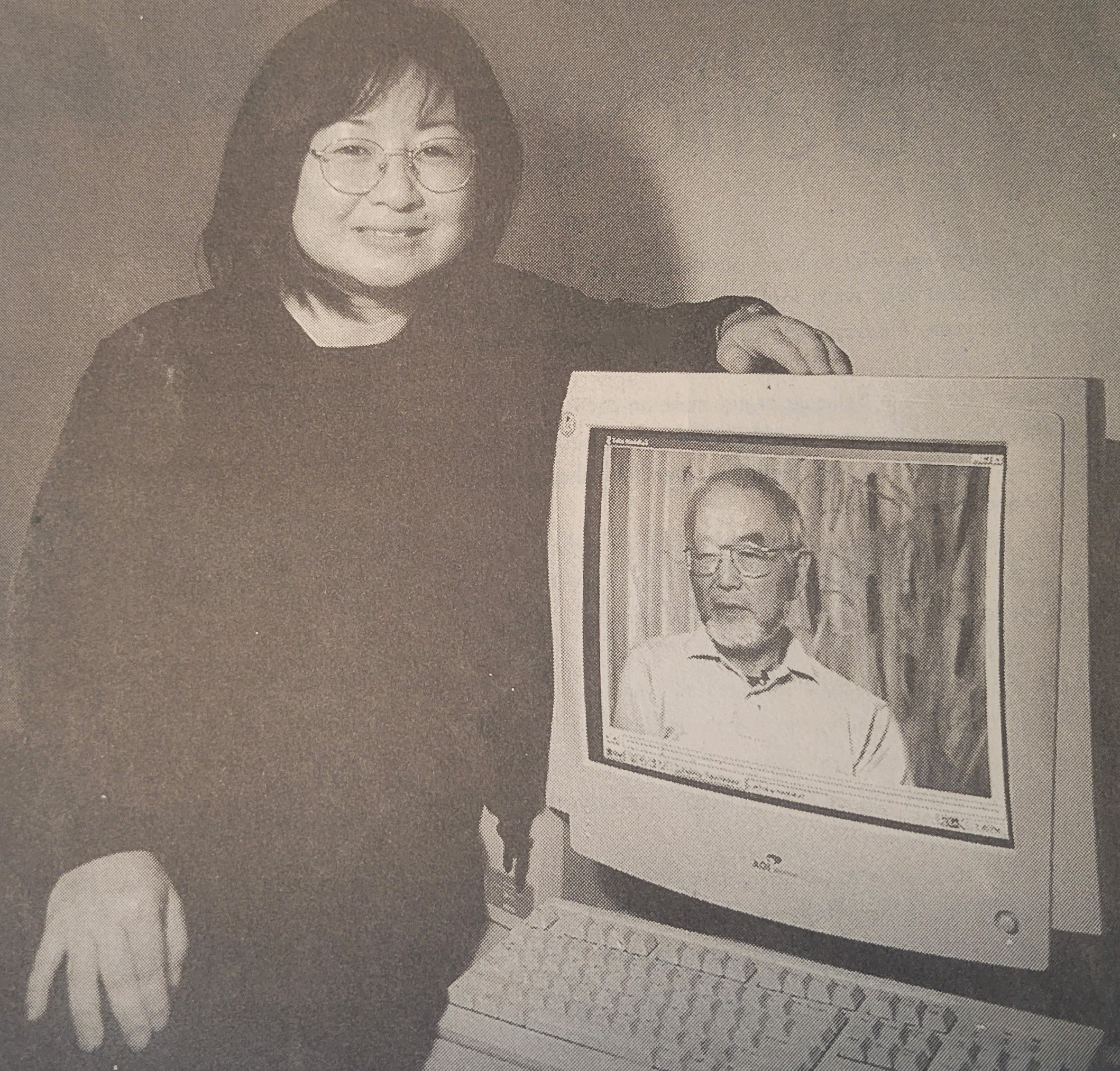BY MARGARET LALIBERTE, EASTSIDE HERITAGE CENTER VOLUNTEER
Perhaps it was the Army surplus weapons carrier that made it possible; it certainly helped. The weapons carrier (somewhat like a huge jeep) was the one and only means—aside from bushwhacking on foot---that George and Roberta (Bobbie) Farmer had of getting up to their acreage on the hillside lying just south of present-day Eastgate. They bought their first parcel of 540 acres in 1945, knowing that the Eastside was ripe for development after the opening of the floating bridge across the lake in 1940. At the time the few homes in the area were up on Cougar Mountain, accessible by the only road over the mountain from Newport Way, now 164th Ave. S.E. A rough track connected Highway 10 (today’s I-90) to Newport Way at what is now 150th Ave. S.E. A rifle range existed near Newport Way.
Although the land at the top of the hill had stands of tall firs, the hillside to the north had been logged off and was mainly scrub growth. George and Bobbie bought the weapons carrier at an Army surplus sale and used it to carry friends up the hill to enjoy picnics and stellar views to the South, West, and North. They set up a picnic table and occasionally camped overnight on the hill. As Bobbie reminisced in an interview in 1999, “You had this winch on [the carrier] with a cable, that if you couldn’t make it up the hill you found a tree and you put the winch onto it and started and the winch pulls you up.” The first prospective property purchasers were members of the group that organized Hilltop Community. George would ferry them up the hill on Sundays for them to visualize how the hill top could be developed. The Farmers sold the group 63 acres in 1948.
Aerial photo of Hilltop with Horizon View at bottom (1995.12 File #62)
Bulldozing a road up to the top of the hill came next. The Farmers purchased land that is now Eastgate School and got easements from adjacent landowner Charlie Latta and Ed Brim. Charlie and George installed a large sewer pipe in Squibb Creek in the ravine just above today’s school, filled over it with dirt from the creek bank, and built Farmer Road (today’s 150 th/151st/152nd Ave S.E.). The first culvert washed out in a winter storm in 1948, and the weapons carrier swung into action again.
The Farmers had their own subdivision, Horizon View Division A, platted to the north of Hilltop Community. But just weeks after the plat was complete, George died suddenly of a heart attack; he was just 41 years old. Bobbie carried on by herself, getting the roads bulldozed and water lines installed. (She had the rights to 10 water hook ups from the well Hilltop Community had dug. Later she installed her own well.) On weekends she sat in her car with little folders of the plat hoping that folks out for a Sunday drive would be curious about where the roads led. “I had a portable sign that said ‘Horizon View Lots for Sale’ and I used to put that on US 10….I put it up on Friday night, after the county road crew would be finished, and I would leave it up Saturday and Sunday. On Sunday nights I took it down because … I didn’t want them knocking the sign down and taking it.” She also had to keep an eye out for folk who thought the cleared land was a rifle range. “I would go out there and I screamed at them that they shouldn’t be shooting there on a Sunday. They weren’t very responsive to me. So I called the Sheriff’s Department, and they came out and arrested them. Then I got to be a Deputy Sheriff. I have my silver badge. They still didn’t pay any attention to me, but the message got around that it wasn’t to be a shooting range there.”
Two women standing with sign reading "Horizon View" (2014.052.026)
Bobbie had her own home built in Division A and lived there between 1953 and 1959. Then she moved further up the hill where she had platted Horizon View Division C. The weapons carrier languished beside the garage until it was vandalized and a neighbor complained. She finally sold it. Over the years she sold off larger parcels to developers who created Eaglesmere and other neighborhoods on the hillside. She also donated property to both the Bellevue School District and Seattle’s Catholic Archdiocese. She was a generous donor to Eastside Catholic High School and upon her death in 2002 left it a bequest of $2 million.
After George’s death Bobbie had created a memorial plaque memory at the point of the triangle where S.E. 51st. St. and 145th Ave. S.E. meet. She installed a flagpole and flew the flag she had been given when George, a World War II veteran, had died. That little memorial area no longer exists. But the stellar views to North and West still do.
Sources:
Oral interview of Roberta Farmer by Bellevue Historical Society, 1999
EHC archives
Findagrave.com/memorial/32981678/Roberta-farmer. Accessed Feb. 14, 2023
Sarah Jean Green, “Eastside Catholic ‘guardian angel’ leaves $2 million surprise in will,” Seattle Times, May 16, 2002
Alice Staples, “Woman Sells East Side Mountain for $1,000,000,” Seattle Sunday Times, Aug. 13, 1961, p.1
Laurie Varosh, “Houses old and new have in common panoramic view,” Journal American, Sept. 16, 1985, p.2

















